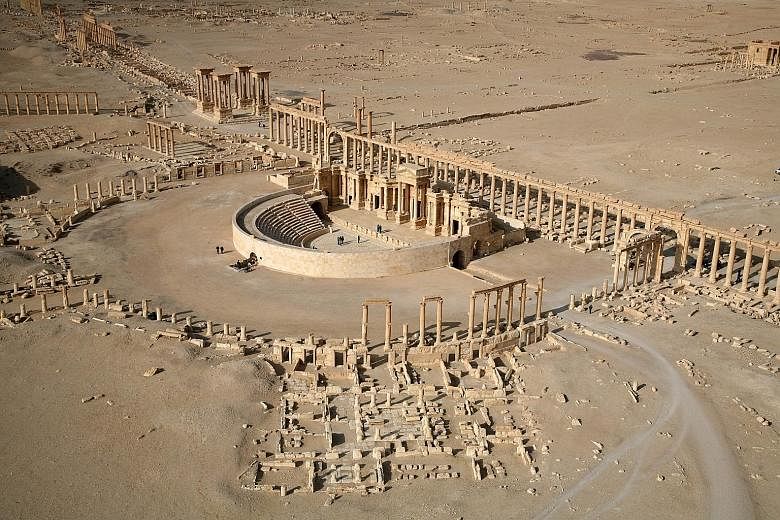DAMASCUS • The Islamic State in Iraq and Syria (ISIS) has blown up several of ancient Palmyra's renowned tower tombs as they press ahead with their demolition of the Unesco World Heritage site, Syria's antiquities chief said yesterday.
ISIS has carried out a sustained campaign of destruction against heritage sites in areas under its control in Syria and Iraq. Last month it also beheaded the 82-year-old former antiquities chief Khaled Assaad in Palmyra.
News of the demolition of the tower tombs, which date back to the 1st century, comes after the Islamists' destruction of the ancient shrine of Baal Shamin and the 2,000-year-old Temple of Baal, regarded as Palmyra's masterpiece.
Antiquities director Maamun Abdulkarim told Agence France-Presse that among at least seven tombs destroyed were the three best preserved and most treasured funerary towers, including the famed Tower of Elahbel. "We received reports 10 days ago, but we've just confirmed the news," he said.
The whole of Palmyra, including the four cemeteries outside the walls of the ancient city, has been listed as a world heritage site by Unesco since 1980.
In its listing, the United Nations agency singles out the tower tombs as the "oldest and most distinctive" of Palmyra's funerary monuments - "tall multi-storey sandstone buildings belonging to the richest families".
Mr Abdulkarim said the Tower of Jambalik, built in AD83, was also destroyed, along with the Tower of Ketout, built in AD44.
He said the tower tombs were symbols of the economic boom of Palmyra in the 1st century, when it dominated the caravan trade between east and west from its oasis in the desert.
Some of Palmyra's monuments still remain intact, including its grand amphitheatre and the Temple of Nabu.
The amphitheatre has instead been exploited by ISIS as a venue to parade its brutal version of religious justice to Palmyra residents since its capture of the city in May.
In one macabre display, child recruits executed 25 Syrian soldiers on the stage.
Gruesome violence and the destruction of priceless artefacts have become hallmarks of ISIS as it has expanded its so-called caliphate straddling Iraq and Syria.
The extremist group considers pre-Islamic monuments, tombs and statues to be idolatrous.
But experts say that while the militants prize the shock value of demolishing ancient sites, they are also keen to preserve some artefacts to sell on the black market to fund their "caliphate".
According to Mr Cheikhmous Ali of the Association for Protection of Syrian Archaeology, more than 900 monuments and archaeological sites have been damaged or destroyed during more than four years of civil war. The destruction of the tower tombs "is an indication of the failure of the international community and global institutions to intervene and solve the situation in Syria", he said.
In addition to damaging sites in Syria, ISIS has also carried out widespread destruction in neighbouring Iraq, demolishing statues, shrines and manuscripts in second city Mosul, and razing the ancient Assyrian city of Nimrud.
AGENCE FRANCE-PRESSE

